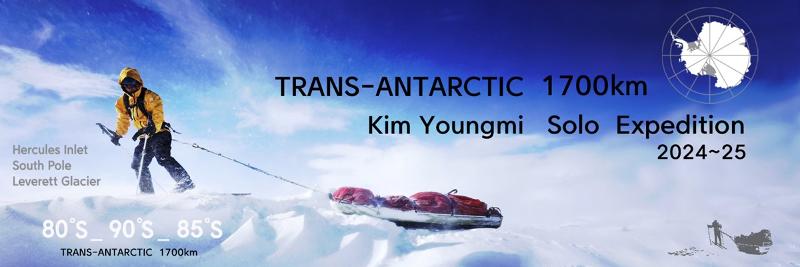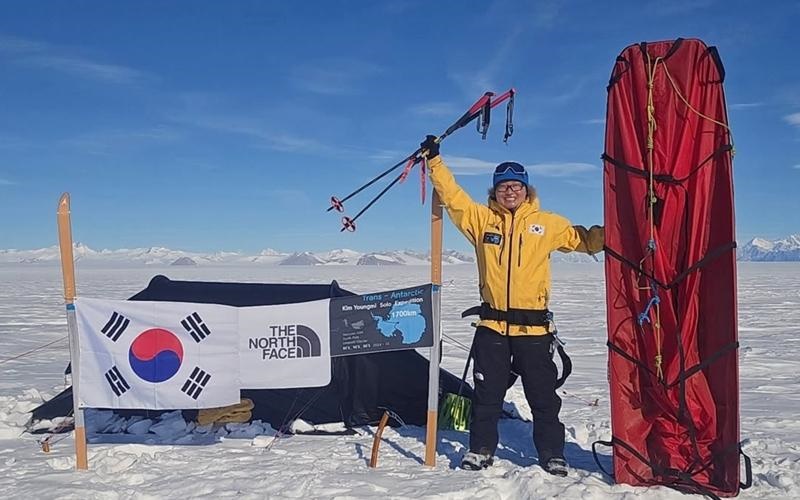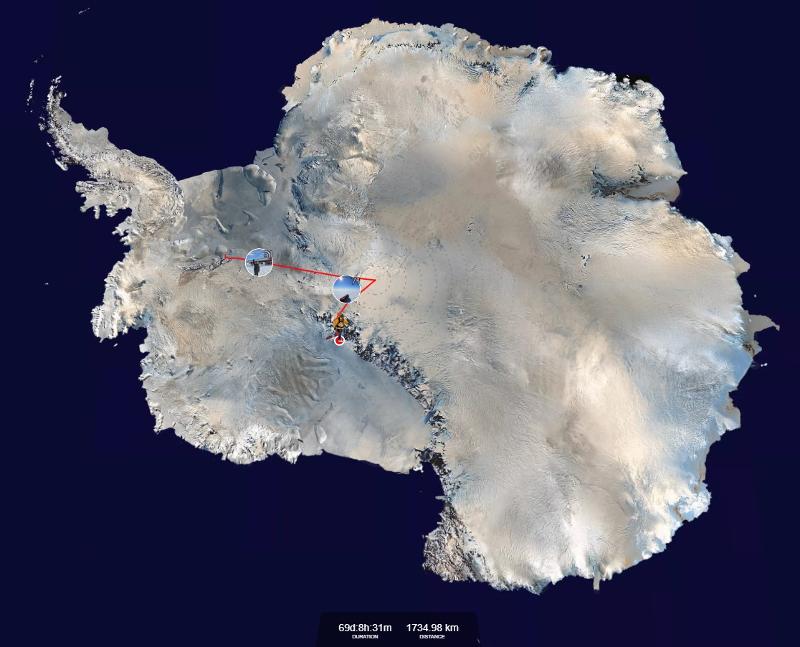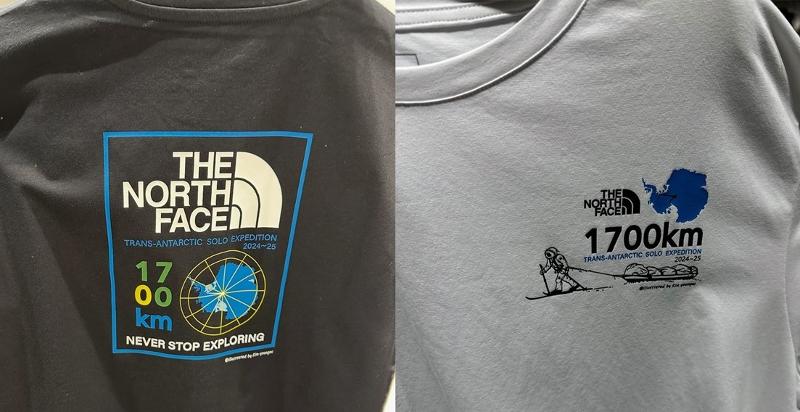
Kim Young-mi on Nov. 8 departed Hercules Inlet on the western coast of Antarctica and arrived at Leverett Glacier on Jan. 17, covering 1,786 km in 69 days, eight hours and 31 minutes in her solo ski crossing of the continent. She is the first Korean as well as Asian to pull off the feat. (Kim's Instagram page)
By Lee Jihae
A woman has braved the extreme cold and fierce winds of Antarctica to cross the icy continent alone. Kim Young-mi, the first Korean to complete a solo trek of the continent, used her 2023 feat of reaching of the South Pole as motivation to take on an even bigger challenge.
On Nov. 8 last year, Kim departed Hercules Inlet on Antarctica's western coast and walked across the continent for 69 days, eight hours and 31 minutes to complete a 1,786 km journey. She finally reached Leverett Glacier on Jan. 17 this year, completing a great voyage that surpassed human limits.
Just four people in the world including Kim have walked across Antarctica, from the inland coast to another inland coast via the South Pole. Korea.net on March 19 interviewed Kim at the headquarters of the outdoor recreation brand North Face in Seoul's Jung-gu District on her stories of survival and challenge in Antarctica.

Kim Young-mi on March 19 speaks to Korea.net in an interview at the headquarters of the outdoor recreation brand North Face in Seoul's Jung-gu District. (Lee Jung-woo)
You must have been exhausted while crossing Antarctica, so how did you eat?
I consulted a nutritionist before leaving for Antarctica and set my daily diet at 840 g of food with 3,800 kcal, but that wasn't enough. I needed about 6,000-7,000 kcal daily. I almost always ate dried beef and instant food. The rice was also freeze-dried, and I just poured water on it to eat. I was in no position to care about taste, and always just wished to eat heartily.
Antarctica is classified as a desert with very little annual precipitation and being dry. How did you drink water in such an environment?
I melted snow to drink. I produced 5 liters of water with about 0.2 liters of fuel. The snow in the South Pole is dense. It contains a lot of water, so I didn't worry about water.
What did you do about trash?
From the start, I compressed the weight as much as possible and took only essential items. I had to carry back all trash with me, so I was very careful to produce as little as possible. My initial load was 100 kg, but as I ate each day, that weight gradually decreased and just about 40 kg remained by the end. I packed two each of all crucial items like two GPS devices, two stoves and two burners; a malfunction if I had only one would have been catastrophic.

Kim Young-mi on Jan 17 poses for a photo at Leverett Glacier. (Kim's Instagram page)
The cold in Antarctica seems unimaginable.
Antarctica is not just dry and cold but also very windy. Think of the ground as basically all ice. A freezer at home has a temperature of typically minus 18-22 degrees Celsius. That in the South Pole is minus 15-35 degrees and when windy, the temperature felt is even lower. I sweated despite such cold because of my heavy load, and my sweat froze quickly. When I took off my jacket inside the tent, the frozen sweat fell like solids.
The wind also decided life or death. Everything would have been over if my tent blew away. When the wind was strongest, I computed the direction of the wind, built a 1 m-tall wall made of snow and pitched my tent behind it. I could hardly eat snacks or drink water on severely windy days, as I would have had to take off my gloves. The blizzard was severe when I left the South Pole and headed toward Leverett Glacier, so I had to rest in my tent for a day.
How did you prevent frostbite amid such extreme cold?
Even very brief exposure of bare skin is dangerous. So I wore gloves and several layers of clothes (layering system). As my face was the only part of my body exposed, I wore two layers of specially designed goggles and a mask. I could not see the time beneath all of those gloves, so I estimated break times by listening to music based on each song's length. I checked the time depending on the sun's location.
How did you block sunlight?
It was summer in Antarctica at the time, meaning an all-white night 24 hours a day. The snow was white and reflected sunlight well, so I always wore goggles or sunglasses to protect my eyes. I slept with an eye patch. When I headed from the South Pole down to Leverett Glacier, the sun was always right in front of me in the direction I was going toward.

Kim Young-mi's route on her solo trip across Antarctica is marked in red. She transmitted her location coordinates once an hour through the GPS system to inform those in Korea of her whereabouts. (Kim's Instagram page)
How was being in Antarctica's environment? Did you feel climate change?
Antarctica is the world's coldest continent and has the highest average altitude of an icy place. I only experienced the season and didn't feel climate change. The Antarctica I experienced lived up to its name as a cold continent.

Kim Young-mi's drawings that she made while traveling Antarctica are featured as designs in North Face clothing. The 1,700 km inscribed on the shirts refers to her approximate walking distance in the continent. (Kim's Instagram page)
jihlee08@korea.kr